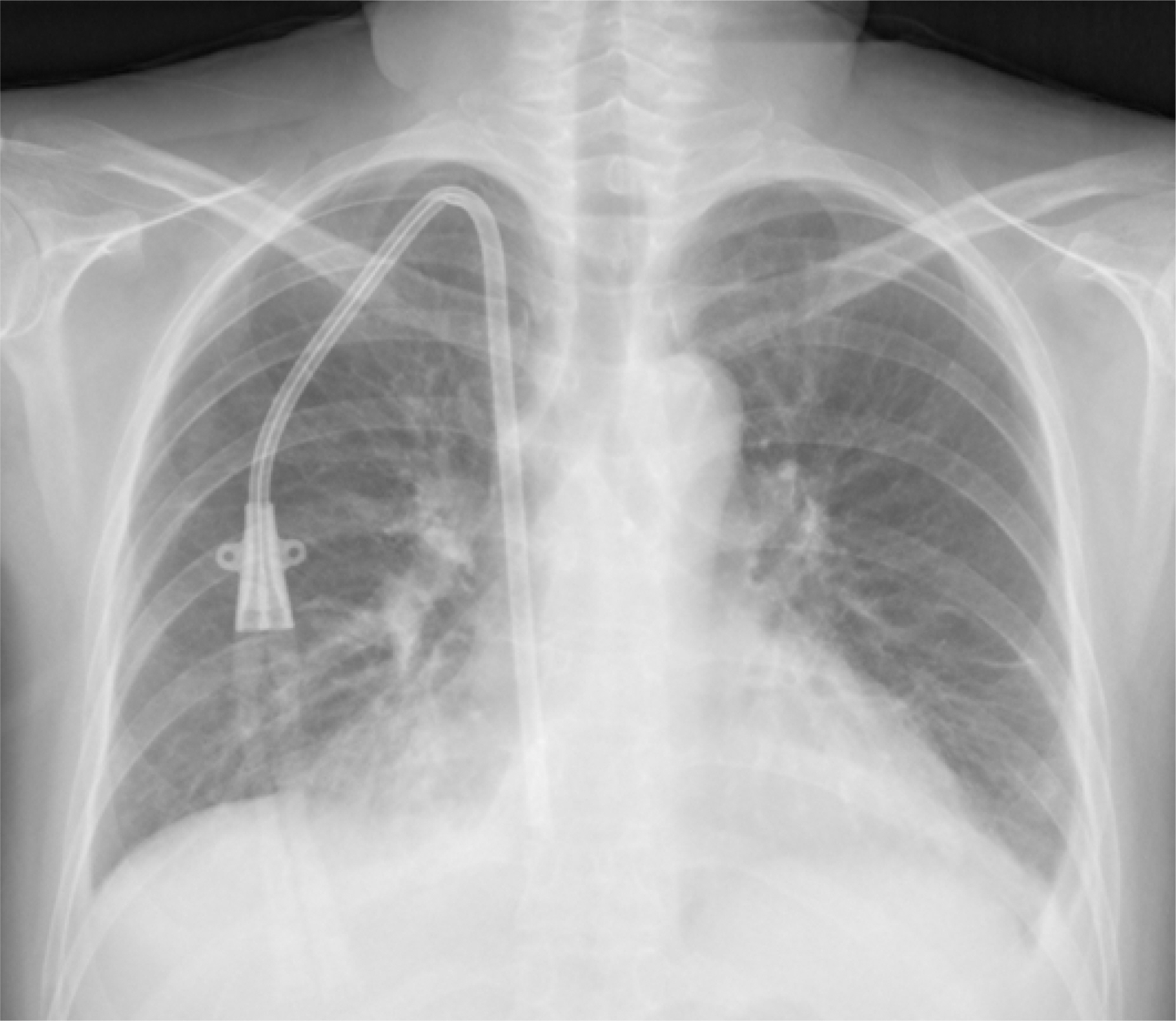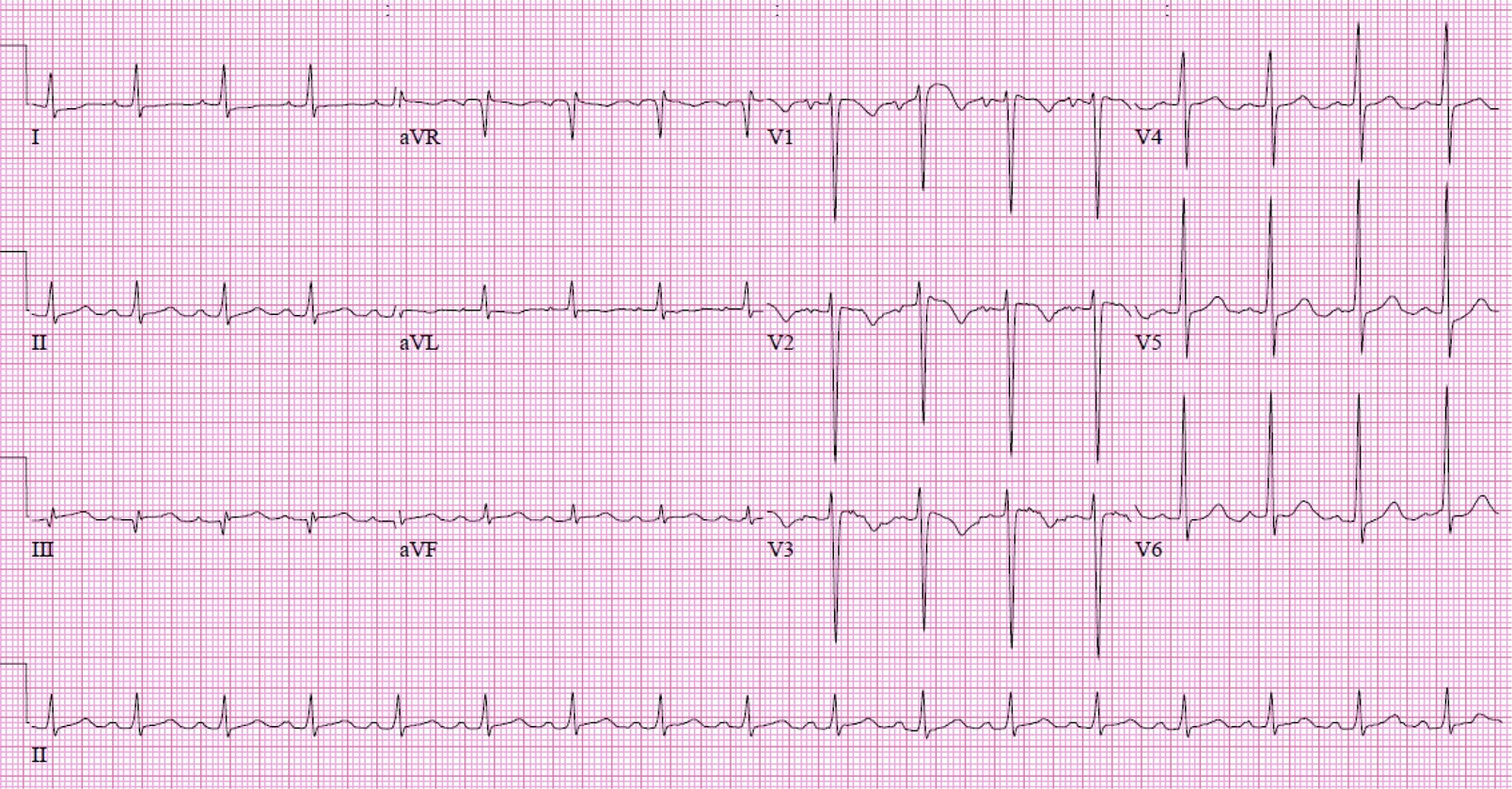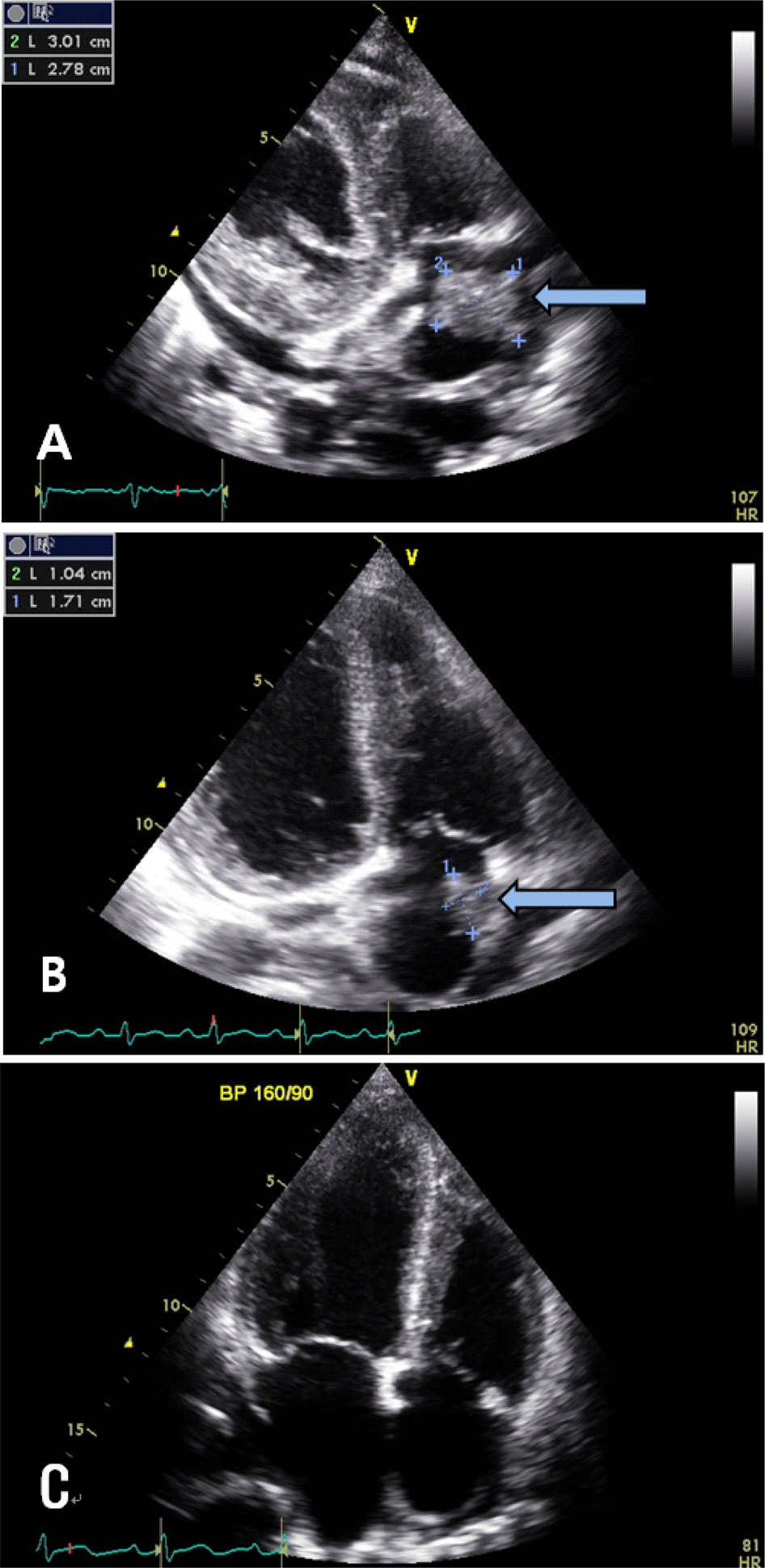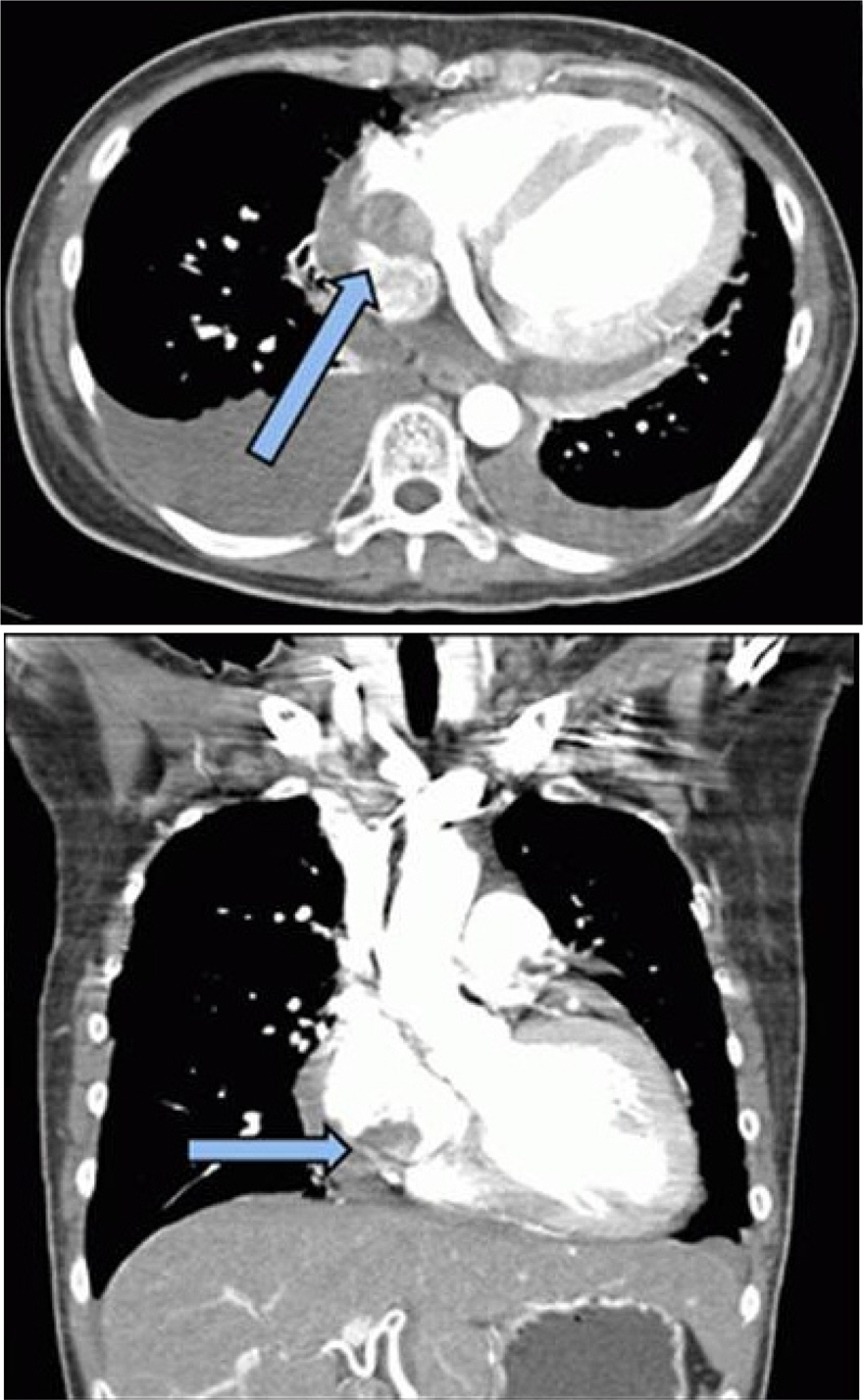Giant Right Atrial Thrombus associated with Tunneled Cuffed Hemodialysis Catheter: A Case of Successful Treatment with Thrombolytic Agent and Anticoagulant
Article information
Abstract
There are a variety of tunneled cuffed hemodialysis catheter-related complications including infection, thrombus formation, and catheter dysfunction. Catheter-related thrombus in right atrium is a rare complication and treatment guideline for atrial thrombus does not exist. A 3.0×2.8 cm sized giant atrial thrombus was found in a 35-year-old female hemodialysis patient. She was treated with catheter removal, thrombolysis and anticoagulation therapy. Size of atrial thrombus was gradually decreased and left ventricular systolic function was clearly improved after treatment. We experienced and reported a case of giant right atrial thrombus associated with tunneled cuffed hemodialysis catheter that was successful treated with thrombolytic agent and anticoagulant.

Chest PA shows cardiomegaly, bilateral pleural effusion and a central venous catheter. Tip of catheter through right internal jugular vein is located at right atrium.

Electrocardiography shows T-wave inversion in lead V1-3. But there in no significant change for previous study.

(A) Transthorasic echocardiography shows a 3.0×2.8 cm sized mass in right atrium on admission. (B) After 2 months, echocardiography shows a 1.0×1.7 cm sized mass. (C) After 6 months, echocardiography shows no mass in right atrium.
